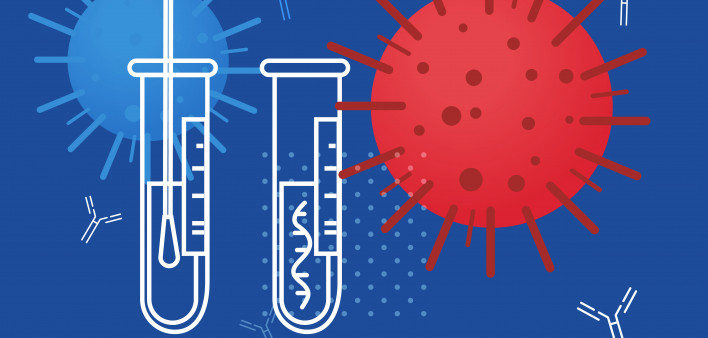During the first wave of the pandemic, people living with HIV went to the doctor one third as often and underwent one third the level of viral load testing. What’s more, treatment failure rose by a quarter during this time, according to data presented at IDWeek 2021. The first wave of the pandemic is defined as March to October 2020.
The data add more evidence to the growing body of research showing that the COVID-19 pandemic is affecting the health and financial stability of people living with HIV. And that impact is not felt evenly among communities impacted by HIV, with Black, American Indian and Latino adults bearing a heavier burden.
Gerald Pierone, MD, of Whole Family Health Center in Vero Beach, Florida, and colleagues assessed changes in HIV care and outcomes during the first year of the COVID-19 pandemic.
The OPERA cohort follows nearly 5,000 people with HIV receiving care at 85 clinics in 19 states and one territory who switched to Dovato (dolutegravir/lamivudine) or a three-drug regimen containing dolutegravir or bictegravir (the integrase inhibitor in Biktarvy) since May 2019. They all had an undetectable viral load (defined as fewer than 200 copies) when they switched treatments.
So when the COVID-19 pandemic hit, researchers had a readymade cohort of people to follow as they navigated treatment interruptions and other stressors of the pandemic. In pre-pandemic times, the cohort included 4,806 people; between March and October 2020, the cohort grew to 4,992 people.
During this period, participants attended about half as many in-person clinical visits as before (from 9.84 visits to 6.03 per person year). But that did not mean people didn’t get any medical care—it just shifted largely to telehealth visits, which people made nearly nine times more often during the pandemic than before, from 0.23 per to 2.06 visits per person-year. Still, there was a drop in overall clinic visits, which fell by nearly a third, from 10.07 to 7.1 per person year.
Likewise, viral load testing dropped by a third. Before COVID-19, 13 participants (0.3%) saw their viral load rise above 200 copies; during the first wave of the pandemic, that number doubled to 29 (0.6%), for a treatment failure rate that was one quarter higher compared with before the pandemic. But that drop was not statistically significant.
“The investigators cautioned against taking too much reassurance from the nonsignificant change in virological failures from before COVID to during COVID,” Mark Masconili reported for NATAP. They noted “that less frequent viral load testing could leave more virological failures undetected.”
Click here to read the NATAP report.
Click here to read more news from IDWeek 2021.
Click here to read more news about the COVID-19 pandemic and health disparities among people living with HIV.







Comments
Comments